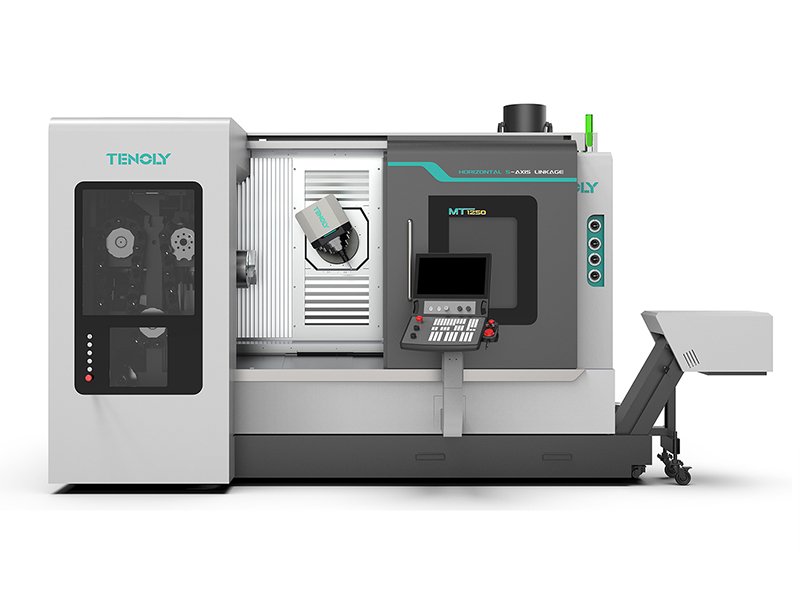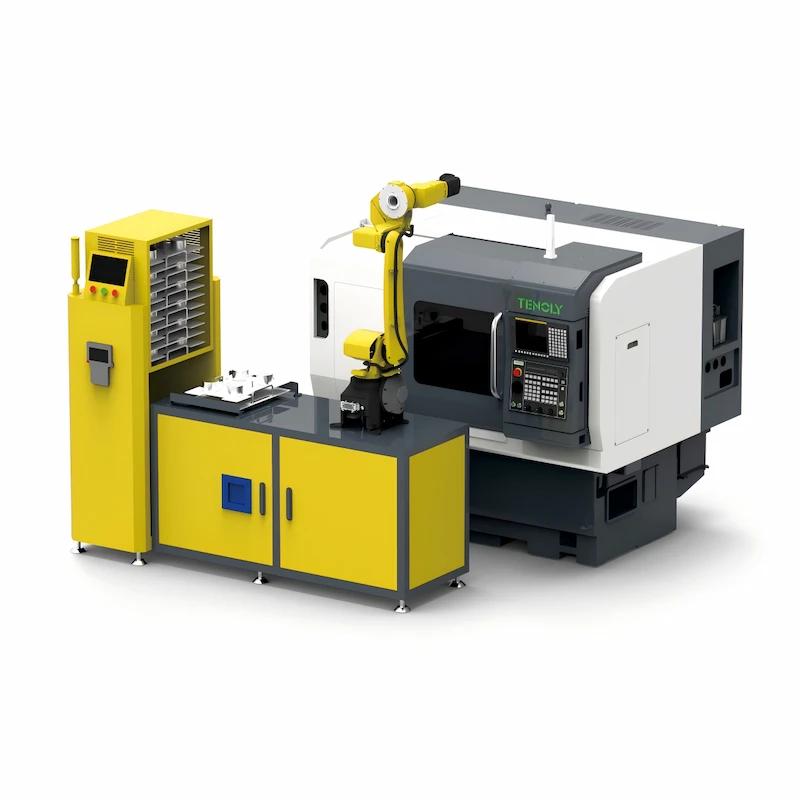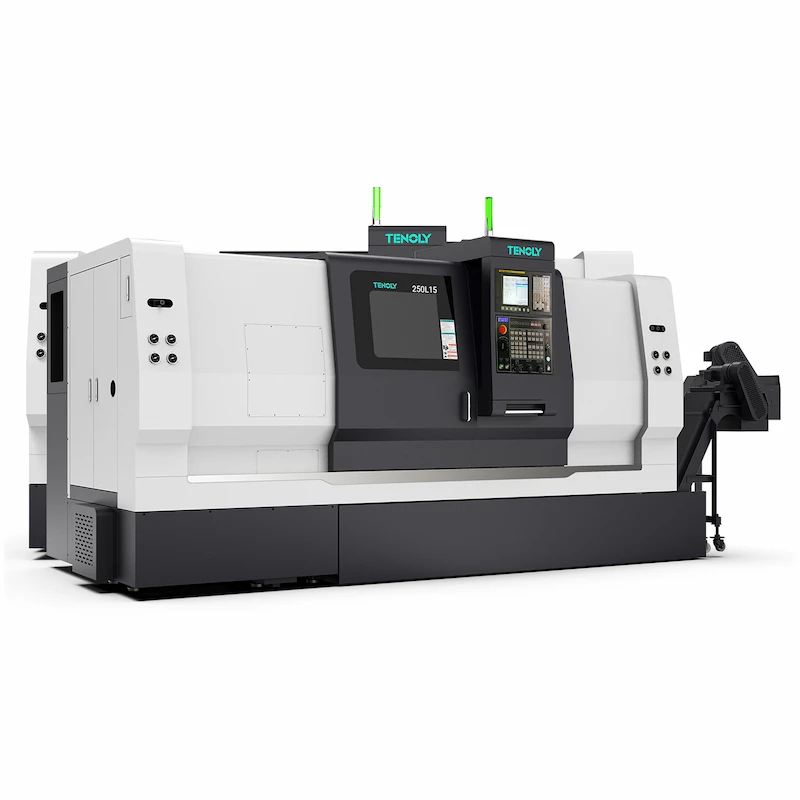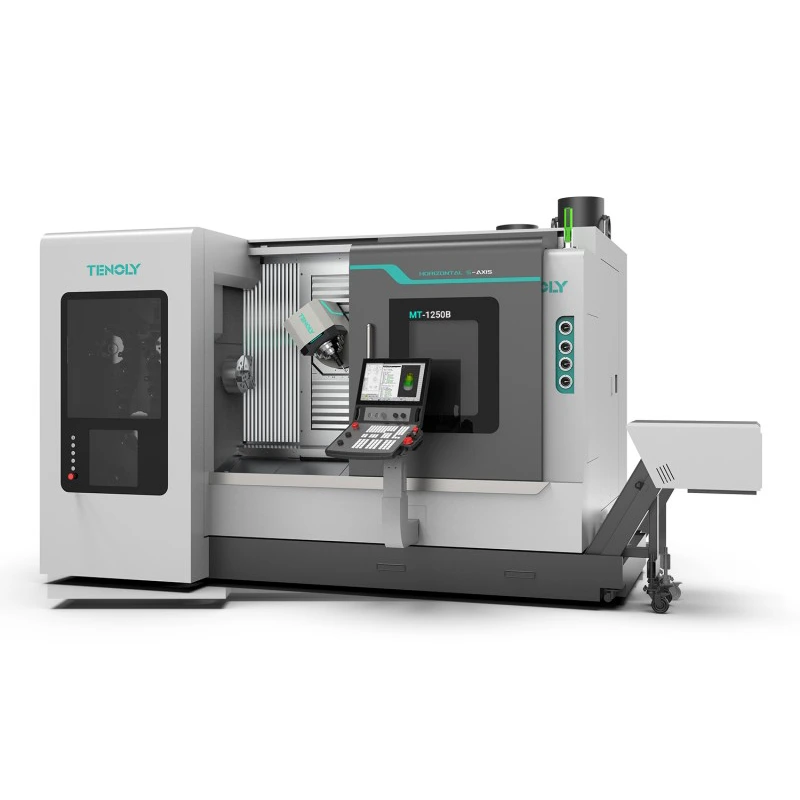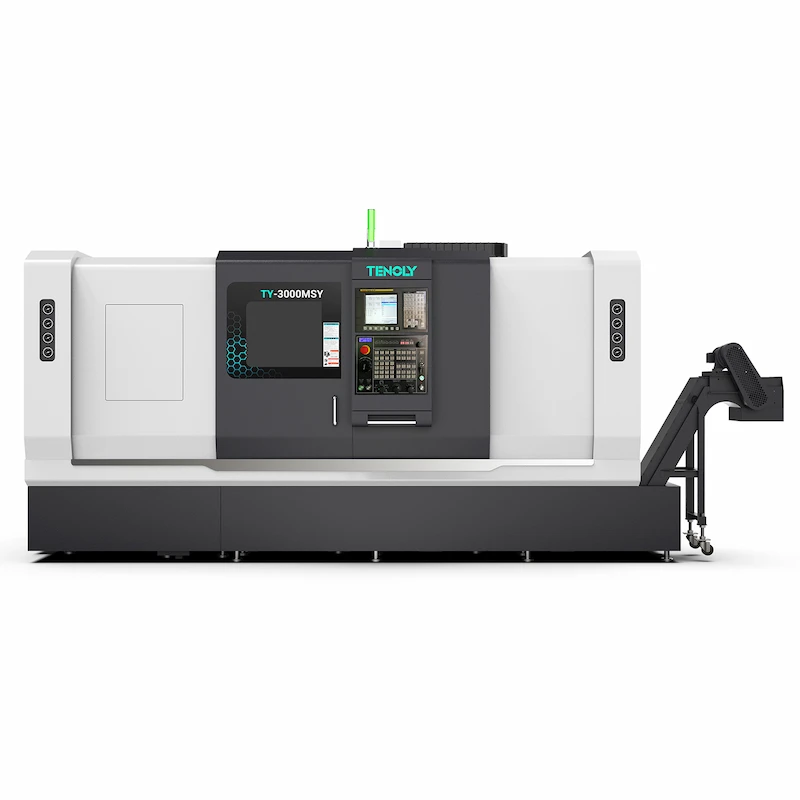As the manufacturing industry continues to improve product precision and production efficiency, many customers are facing numerous challenges with traditional machining, including long production cycles caused by multiple machines and process switching, positioning errors resulting from repeated workpiece clamping, frequent tool changes, and low levels of production automation. Traditional machine tools, especially in the machining of complex parts, often struggle to meet the demands for high precision and efficiency. Overcoming these bottlenecks is key to improving companies’ competitiveness.
Product Introduction
To address these challenges, the five-axis CNC mill-turn lathe has emerged. It integrates multiple machining functions, including turning and milling, and features an advanced five-axis linkage system, enabling multiple machining steps to be completed in a single clamping, effectively shortening production cycles. Whether in aerospace and automotive manufacturing, or in medical device and high-end mold manufacturing, this type of equipment can significantly improve machining quality and production efficiency.
Product Types
Five-axis CNC mill-turn lathes are primarily divided into horizontal and vertical types.
· Horizontal five-axis mill-turn machining centers: These feature a horizontal spindle arrangement, a 12,000 rpm B-axis swing capability, a 60/120 tool magazine, support for various spindle chuck sizes (8-inch, 10-inch, and 12-inch), and a counterspindle. They offer a maximum workpiece diameter of 500mm and optional turning lengths of 850/1250/1650mm. The spacious, transparent workspace facilitates operation, and the Y-axis eccentric travel extends to ±105mm.
· Vertical five-axis mill-turn machining centers: These feature a vertical spindle arrangement, suitable for high-precision simultaneous machining of multiple surfaces, inclined surfaces, and complex contours. They integrate turning, milling, drilling, and tapping, making them suitable for complex machining of a wide range of complex workpieces.
Product Advantages: High Precision, High Automation, and High Efficiency
· Five-Axis High Precision
The B-axis supports continuous and precise indexing at any angle, and the C-axis positioning accuracy is as precise as 0.001°, ensuring high-quality machining and surface finish for complex shapes.
· Automatic Tool Changer and Large-Capacity Tool Magazine
The standard 60-tool magazine can be expanded to 120 tools. The servo-driven tool changing system is fast and reliable, significantly improving production automation and reducing the risks associated with manual operation.
· Simultaneous Mill-Turn Machining
Supports high-precision C-axis operation of the spindle. The milling and turning spindles work together to complete multiple processes with a single clamping, improving machining consistency and efficiency.
· Flexible Chuck and Operating Space Design
Multiple chuck sizes meet the needs of diverse workpieces, and the spacious and transparent work environment enhances operator convenience and safety.
Applications
Five-axis mill-turn lathes are suitable for industries such as aerospace parts, automotive engine assemblies, high-precision medical device components, complex mold manufacturing, and high-end machinery manufacturing. Their high-precision machining capabilities and integrated multi-process capabilities make them unparalleled in machining complex, special-shaped parts and multi-faceted surfaces.
How to Choose the Right Equipment?
When selecting a five-axis CNC mill-turn lathe, users should consider the following factors:
Workpiece size and machining requirements (long or short axis, part diameter, length); Machining accuracy requirements and part complexity; Tool requirements and multi-process integration capabilities; Production batch and automation level requirements; Equipment workspace and ease of use; After-sales service and technical support capabilities
We provide customized five-axis CNC mill-turn lathe solutions tailored to individual customer needs. To ensure the equipment’s performance closely matches customer requirements, we recommend providing the following information:
· Main workpiece dimensions and geometry;
· Specific machining processes (turning, milling, drilling, tapping, etc.);
· Production batch and automation level requirements;
· Specific machining accuracy standards;
· Expected number of tools and tool change frequency;
· Special machining requirements and on-site operating environment.
Based on this information, we will assist customers in selecting the optimal equipment model and configuration, and develop an efficient application plan to maximize their production efficiency.
Summary
Five-axis CNC turning-milling machines, with their advanced technologies such as five-axis linkage, high-precision control, and automatic tool changing, successfully address many pain points of traditional machining, significantly improving processing efficiency and part quality. By selecting the appropriate horizontal or vertical machine model and combining it with sound equipment configuration and process planning, users can achieve high-quality and efficient manufacturing of complex parts. Through customized solutions and professional support, we help companies enter a new era of intelligent manufacturing and secure a competitive advantage in the industry.

